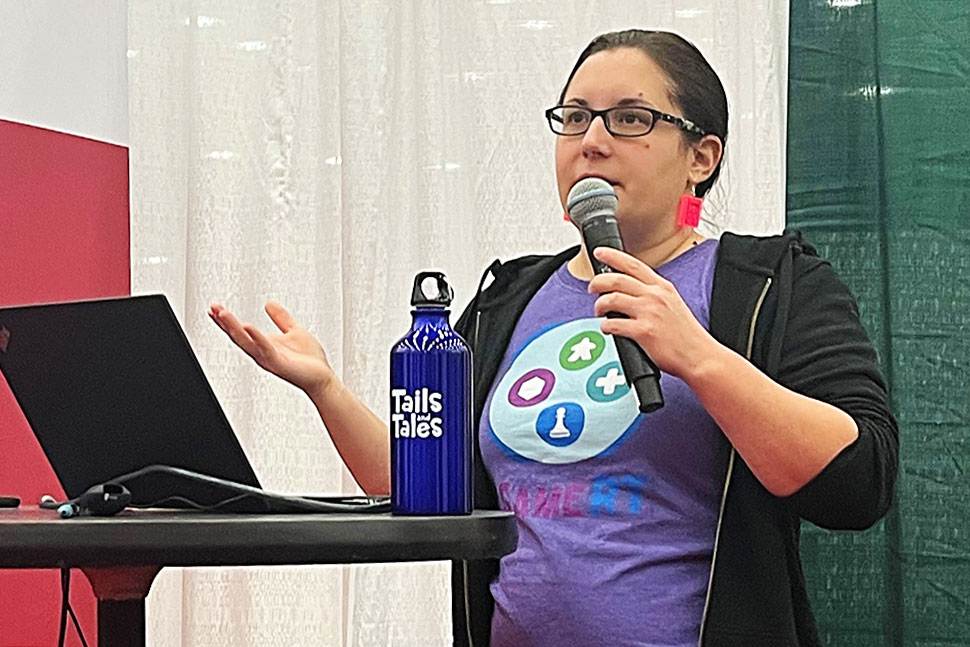
Gameplay. Arts and crafts. Just Chatting sessions. Libraries can use livestreaming service Twitch in a multitude of ways, according to Liz Brown, outreach and instruction librarian at University of Colorado Colorado Springs’ Kraemer Family Library.
“[Twitch is] where gamers are,” Brown said. “That’s where we really wanted to do some outreach.”
She discussed the pros and cons of using Twitch, ideas for library programs that can be livestreamed, and how the popular platform enables libraries to reach new audiences at “Low Stress, High Mayhem: Using Twitch for Professional Development and Programming,” a January 22 session at the American Library Association’s (ALA) LibLearnX conference in Baltimore.
Brown said that ALA’s Games and Gaming Round Table (GameRT), for which she serves as secretary, began developing its Twitch channel during the height of the COVID-19 pandemic, “when everyone was looking for ways to connect with members and develop content.” GameRT was also looking to build relationships outside of the ALA and its circles by seeking other gamers, publishers, and general viewers.
It’s free to start streaming on Twitch, making it a leading alternative to Zoom and other virtual formats that gained traction during the pandemic, Brown said. But there are a few caveats. For example, account holders may need to download their streams within seven days of their broadcast to save them (they are not automatically backed up by the platform), purchase external equipment (like a capture card) to stream videogames, and upgrade to high-speed internet.
“There is a definite learning curve,” Brown said. “I would give yourself at least a couple of months to figure out how to use all of it.”
One of the main benefits of using Twitch, Brown said, is that it is a more casual setting for more personable conversations. “It’s less scripted, less formal,” she said. “There is [spontaneity] in a way that we don’t see in other performative media.”
Brown said she likes to use Twitch to host tabletop roleplay gaming sessions (she avoids streaming Dungeons & Dragons in favor of featuring less popular games), “let’s plays” of videogames, and mini-conferences. The length of a typical stream is about two hours or more, Brown said, so there is room to experiment.
“We’ve seen how hybrid programming has not worked in a lot of ways,” Brown said. “[Twitch] gives us the benefit of reaching people online if they’re not in our spaces physically.”


